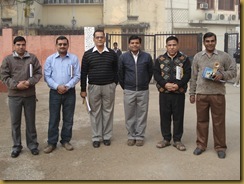
I am in the blue shirt
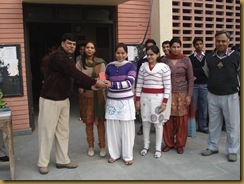
My House team also won!

And the winners…..

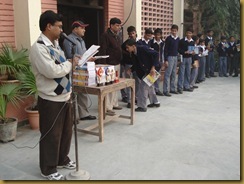
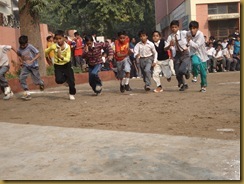
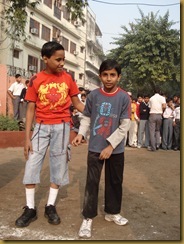
"Happy are they, in my opinion, to whom it is given either to do something worth writing about or to write something worth reading; most happy, of course, those who do both." Pliny the Younger-Letter to the historian Tacitus. C. AD 106







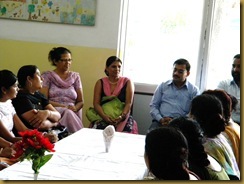
Numismatics is the hobby of collecting coins. I was hooked on to this hobby later than I became a Philatelist. Since I was living in Ethiopia at that time, I came across a large number of Foreign Nationals and they willingly gave me coins of their countries. I had a lot of friends from the Erstwhile Soviet Union, and they willingly gave me Kopeks. Cubans gave me Pesos, while friends from the G.D.R. (German Democratic Republic or East Germany) gave me Marks. I initially started collecting coins belonging to the Haile Selassie Era. When my parents shifted to Addis Ababa, I was introduced to an old lady who had lots of coins which she sold to me. In those days all my meagre pocket money would be spent in purchasing coins from this lady. Later, when I came to India for further studies, my relatives willingly gave me Indian coins belonging to the British Raj. Later when I joined a Government Aided School as a teacher, one of the peons would bring me coins for which he charged me exorbitant sums, but then nothing thrills a numismatist more than to see coins of different countries, even if they are worthless! An interesting incident once took place with me when I was in Mumbai to attend a cousin’s marriage. I purchased a lock from a street vendor, and noticed how he rather hastily pushed the change including what seemed to be a five rupee coin into my hand. While walking away I was curious about the amount the vendor had returned, and when I opened the palm I saw that he had fobbed me off with a coin that was not an Indian five rupee coin. Angered by this, I started to walk towards him, but, then when I closely looked at the coin, it was a One pound coin! How glad I was that I had been fooled! I have pasted below some of the snaps of some of the coins I had early on:
This is a silver fifty cents coin belonging to the Haile Selassie era.
This is a one shilling coin belonging to the British Colony of East Africa of the year 1924.
This is a Tanzanian five shilling coin. What makes it interesting is that it displays the crops grown in the country and the fact that it has a generous amount of Live Stock. The Agrarian nature of the country is displayed here!
This is a Cuban coin made of Aluminium. It is said that the quality of the metal used in a coin reflects the economy of the country!
This is a one Mark coin of the German Democratic Republic or East Germany. It is made of aluminium, and don’t be swayed with the words, “democratic” because East Germans were victims of a Repressive regime!
This is a fifteen Kopek coin of the erstwhile Soviet Union.Those were the days when Ethiopia too was a Socialist Country.
This is an older Ethiopian coin of the Haile Selassie Era. You can see the legendary Lion of Sheba on the coin.
I have a lot more coins which are rare and strange, but to write about all of them would be time consuming and time is exactly what I don’t have right now!
If you don’t like my writings, then say so
Because, they constitute the truth but so,
They hurt your feelings if they are blunt to
Say things straight from my heart ! If so
Then we don’t see eye to eye so
Shall I write in poetry not in verse for so
It might please you to have stopped me so!
It takes time to pen or key a few words of
Appreciation, which might not be of
Your liking, for I don’t believe in sycophancy
To speak true and from my heart would fancy
Me so! To kill talent might be you fancy,
But then talent might not be killed through fancy!
To appreciate the skies blue requires the eye
Of a poet, but you have the eye
Of a rock. To see emotion aye
Troubles you, but aye,
My desire is to pen my feelings, aye
You might not read poetry, but aye,
Speak out so that your feelings are dead!
For who might tutor a heart rustic and crude,
It needs a life of song and poetry!
To write in prose might suit your style,
But, I would write a poem to satisfy
My will to express my deepest thoughts!
A man who is not a poet is dead to
Emotions, but a poet lives in Emotions!
Would that you be musical enough, would
That you appreciated the song of the poet!
While prose might be the pastime of the crude,
For me, poetry would souls arouse,
For, to sing a song of life be a need,
For you to stumble through words of
Flattery be the goal of life! Let me
Be, for will I write gladly, a song for you!
While going through one of my stamp album I came across stamps from two Axis countries of the Second World War, namely Japan and Germany. While I found it absolutely impossible to decipher what was written on the Japanese stamps, I found that I could decipher what was written on the German stamps.
The Legend, Third Reich is the name given to Germany by Adolf Hitler. Germany was then also called the Father Land! The Characteristic Swastika, albeit opposite from the Swastika of India, was the symbol of the so called Aryan Super Race, the Pure Race and it was the dreaded symbol of the worst kind of Genocide in History.
The stamps dated 1945 mark the end of the Third Reich. There is a rumour that the allies printed some German stamps and then flooded them in the German Market. Perhaps one will never know the reality since it happened so many years ago!
What I noticed about this stamp was that right in the centre, the stamp was embossed, probably, they ran out of Ink?
This I believe is not a postage stamp! It is a Revenue stamp.
The above three stamps are postage stamps.The eagle is a well known symbol that once graced the Nazi infrastructure. The Phoenix-Eagle was an important for Germany after the first world war, it was a symbol of recovery, resurgence, and growth especially after the humiliating defeat in the first world war.
Through my brief association with some important Philatelists of the country, I was surprised to know that items of importance for all Philatelists are not just limited to stamps, but the list includes inland forms, envelops with stamps printed by franking machines, Postal stationary, Postal Greeting Cards, Postal Envelops With printed Stamps ( not just stick on postage stamps ), and even Postal acknowledgement stamps! The Department of Posts and Telegraph under the Government of India comes out with some amazing stationary items which I am going to show you. All this information surprised me, and so I went on to add on this Postal Stationary to my collection. I have put up some photographs of some of the Postal Stationary that forms part of my collection below:
In the above photograph you have a set of one envelop with a card inside. The stamp on the envelop is a miniature version of the greeting card!
In the above picture, there is an envelop and a greeting card on the theme as simple as that of a Birthday Greeting!
The above picture rekindles memories of Christmas! Here also there is an envelop with a stamp printed on it. The stamp is a miniaturised version of the Greeting Card!
Unfortunately, Philately is a dying hobby, and fewer and fewer people have any interest in stamps or Postal Stationary. It seems that the romance of collecting stamps no longer affects the younger generation! For me however, the thrill of looking at a new stamp, the excitement of looking at a stamp in my collection has never died. It is as if I am looking at an old friend, a companion that has been with me.
The popularity of the E-Mail, Instant Messaging Services, and the Courier Services have all spelled the doom of the hobby of collecting stamps. The Department of Posts and Telegraph, Govt. of India keeps organising stamp exhibitions, and competitions throughout the year for students all over the country. Students are encouraged to open a postal account whereby they are sent postal material of their choice, whether stamps, first day covers, or cancellations. Such activities attempt to introduce the romance of collecting stamps in the hearts of young people!
I made my first stamp album way back in 1975, and those were the days when it was easier to come across a large variety of stamps. By 1975, I had quite a few stamps, mostly Ethiopian stamps. Once I got hooked on to collecting stamps, there was no turning back, and here I am, still an avid collector of stamps, and coins. Thus it wouldn’t be wrong to state that I am both a Numismatist and a Philatelist. When I was working in Delhi, I met Mr.Pulak Gupta, another Philately expert, and my hobby got a fillip! What turned me on as a young stamp-collector was to see colourful stamps belonging to different countries, then it was all about owning the whole series of stamps. I remember how I used to exchange stamps with friends. Gradually, novel shapes of stamps began to attract me. Today, I have lots of stamps which are triangular in shape! The hunt for rare stamps began long ago, and I began looking for rare stamps. By rare it would mean a stamp that was printed the wrong side, or perhaps a stamp which was printed in very few numbers!
Afewerk Tekle was a very well known Ethiopian Painter and the above two stamps bear his stamp!
My brief association with the Department of Posts and Telegraph made me realise the importance of First Day Covers, the importance of first day issues, and cancellations. I learned that postal stationary too is collectible! Thus, under postal stationary you have greeting cards with stamps printed on the envelops!
The language in both the stamps is French. Later on, French was replaced by English. The first stamp depicts Lake Tana, an ancient and rather Mythical lake, while the second stamp depicts the famous Blue-Nile falls. In Amharic, it is translated as Tississat, literally, “water that smokes!” The Ubiquitous Dakota, or DC-3 can be seen flying over the landscape. The DC-3 was a versatile workhorse, it was rugged and could land on a hastily cleared runway!
Massawa was an important sea-port in Ethiopia. Today, it is part of Eritrea.
There is a lot that the stamp collector learns from his stamps. As a stamp collector, you learn about the scripts, languages, currency, history, flora, fauna, important personalities, discoveries, inventions, Geography, …etc. The list is endless! I was especially interested in collecting Ethiopian Stamps belonging to the era of Haile Selassie’s reign. The language in the earlier stamps of the Emperor Haile Selassie is French, showing the closeness that the Ethiopians shared with the French. And so, I too ended learning French from Alliance Francaise! The stamps belonging to the period of Haile Selassie’s reign point out to a fledgling Nation coming to term with modern science, setting up of Railways, Dams, and discovery of new species of animals, birds, plants, a desire to depict the Ethnic Culture, and a depiction of various people of historical importance. It wouldn’t be wrong to state that stamps are a window into a country’s culture, customs, traditions, Geography, History, language…etc.
The above three stamps are part of a series of stamps with different denominations. They portray the Emperor of Ethiopia, Haile-Selassie who was overthrown by Mengistu Haile Mariam. This series of stamps was replaced by the series of stamps shown below during the years when Mengistu was the Chairman of Ethiopia:
If you look closely you will notice that the symbol in the centre represents the Plough-Bit. It symbolises the agrarian Nature of the country. This symbol is significant as it came after the Ethiopian famine that struck the country in the middle seventies.